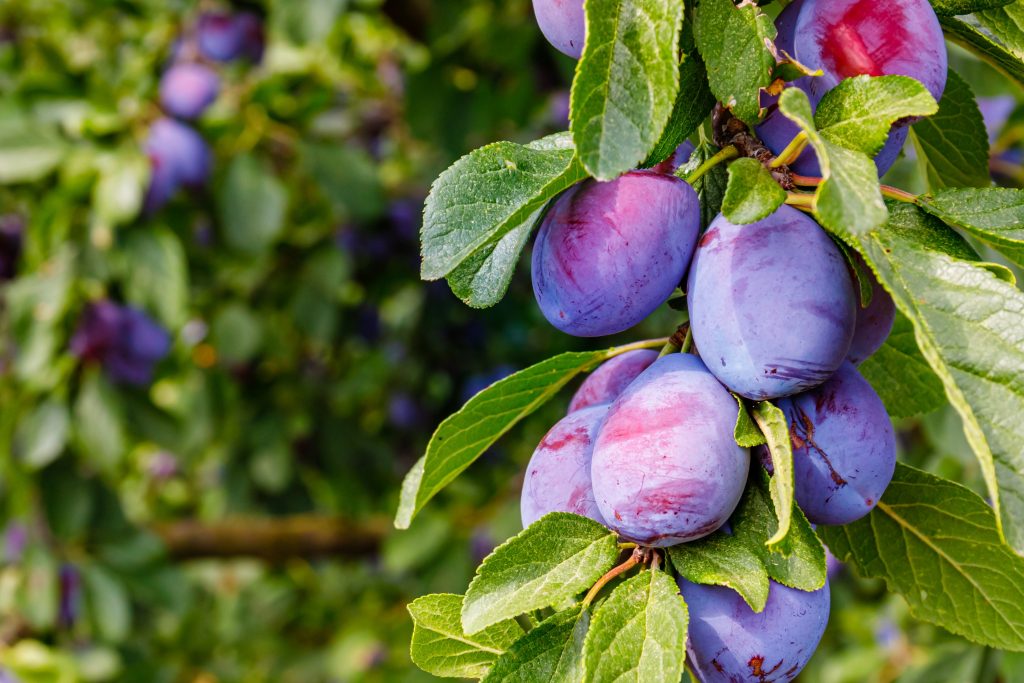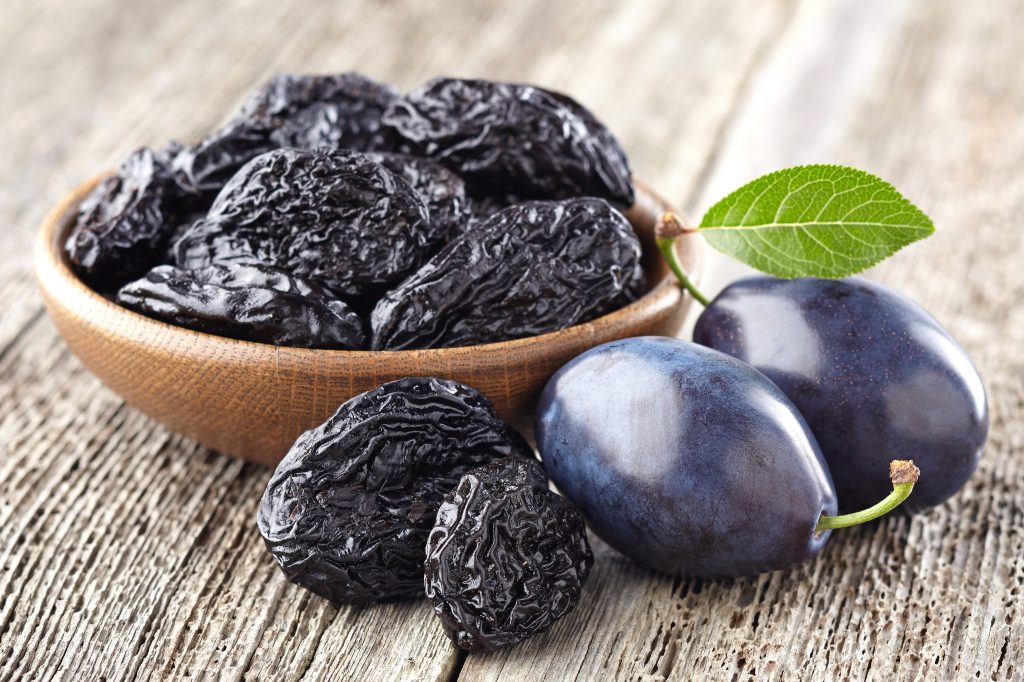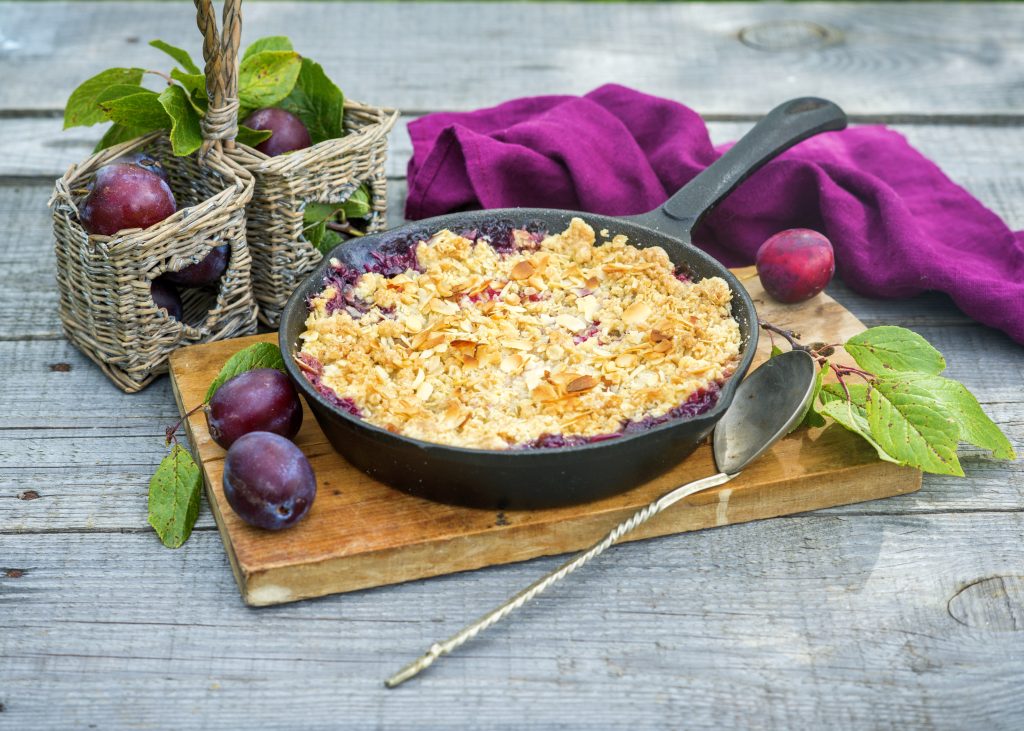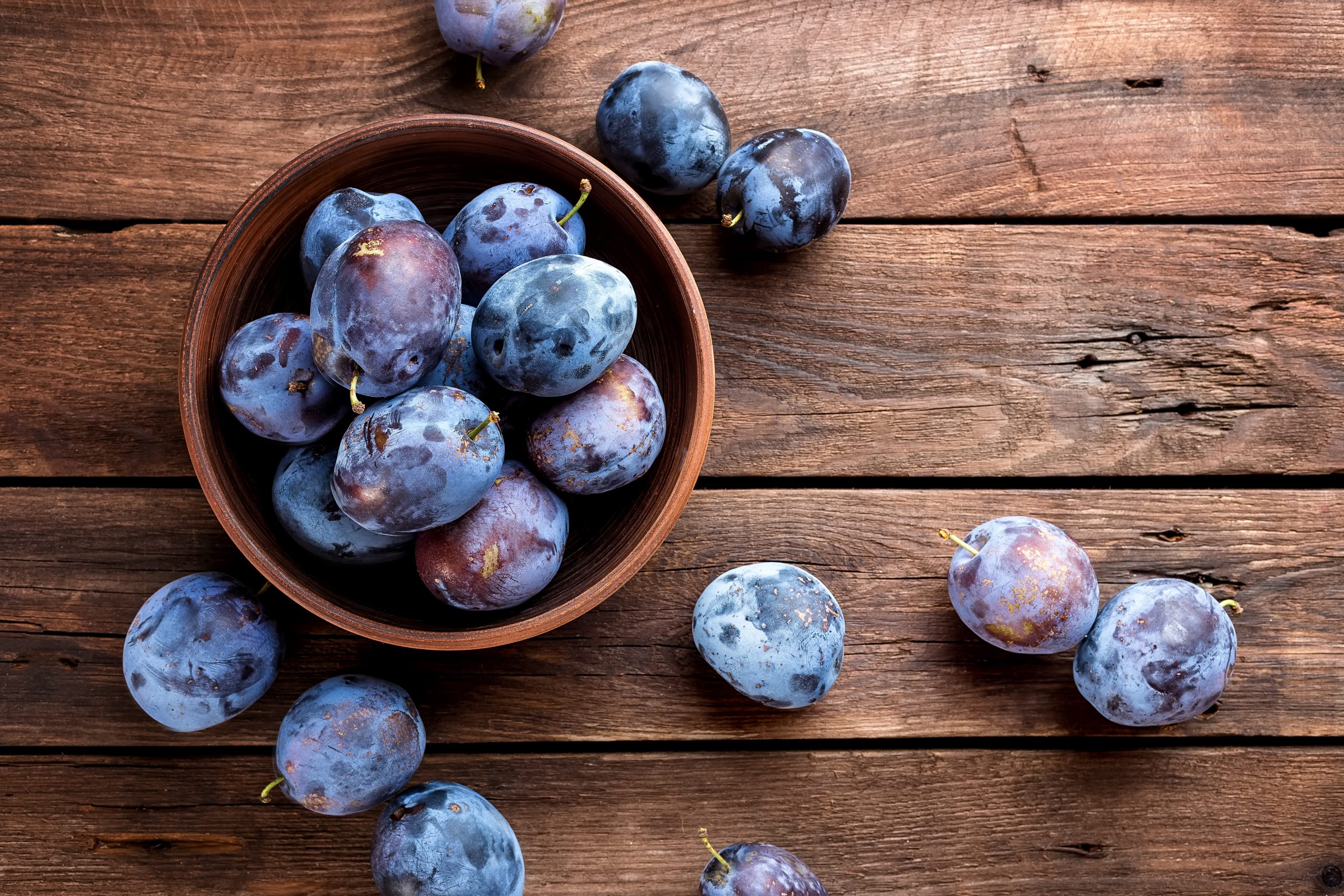Plums are a juicy and sweet fruit considered to be one of the first domesticated fruits. They have been cultivated for thousands of years, with origins tracing back to ancient China, and are still known for their nutritional benefits and unique taste.
Table of Contents
What is a Plum?
A plum is a type of stone fruit, similar to apricots and nectarines, that belongs to the genus Prunus of the Rose family. It is a drupe, which means it has a hard stone pit surrounding the seed. Plums are also known by several other names depending on the variety, including greengage, damson, Mirabelle, and Santa Rosa plum.
Plums come in various colors, including purple, red, reddish-purple yellow, green, and blue. When ripe, they usually have yellow flesh. They also vary in size, shape, and texture.
Some varieties are round and smooth, while others are oval and have a slightly pointed end. The skin of a plum is typically smooth and shiny, and the flesh is juicy and sweet.
Plums have a distinctive flavor profile that is both sweet and tart. They have a soft, juicy texture and are often eaten as a snack or used in cooking and baking. Plums are also commonly used to make jams, jellies, and fruit preserves.
Etymology: The word “plum” originated from the Old English plume, which meant plum tree. It is believed that this word was borrowed from Germanic or Middle Dutch and had its roots in the Latin prūnum and the Ancient Greek word “proumnon.” Interestingly, during the late 18th century, the term “plum” took on a new meaning, which referred to something desirable.
The History of Plums
Historical records indicate that plums are believed to have originated in China as early as 470 BC. But plums are a type of fruit that has a long history of cultivation across different regions of the world:
- Japanese plums were first domesticated in Japan but originated in China.
- European plums (Prunus domestica) are a hybrid of wild fruits found near the Caspian Sea and the Caucasus Mountains.
In the 17th and 19th centuries, these plums were introduced to the New World, and now they are widely produced in locations such as China, Serbia, the US, and Romania.
During the era of ancient Rome, as many as 300 varieties of European plums were reportedly mentioned in written accounts. Plums were selectively bred throughout time, giving rise to thousands of subspecies and hybrids, and now there are more than 2000 varieties of plums.
What Does a Plum Taste Like?
A plum is a sweet fruit with juicy flesh and a slightly tangy flavor. When fully ripe, it has a soft texture and smooth skin that you can easily peel. The taste of plum can vary depending on the variety, but generally, it has a sweet and slightly tart flavor.
When eaten raw, a plum is juicy and refreshing, with a firm texture that is both sweet and tart. It has a slightly sour taste balanced by its sweetness, making it a delicious and healthy snack.
When cooked, plums become even sweeter and develop a richer flavor. They are often used in pies, tarts, and other desserts, where different ingredients like spices, cream, or pastry can balance their sweetness. Plums can also be cooked down into a jam or sauce, used as a topping for pancakes or ice cream, or glaze for meats like chicken or pork.

How to Tell When Plums Are Ripe
Here are some ways to tell when plums are ripe when shopping for them:
| Color | The color of the plum changes as it ripens, and the fruit should be uniformly colored. Depending on the variety, a ripe plum may be red, purple, blue, or yellow. |
| Texture | Ripe plums are soft but still slightly firm. Press gently on the fruit, and it should yield slightly. If it feels mushy, it may be overripe. |
| Scent | A ripe plum should have a sweet, fruity aroma. If it smells sour or vinegary, it may be past its prime. |
| Smoothness | A ripe plum will have smooth skin free of blemishes or bruises. |
Note: Buy plums in season, as they will likely be fresher and more flavorful.
The Difference Between Plums and Prunes

Many people may confuse plums with prunes. While they do have some similarities, here are some primary similarities and differences between the two:
Similarities:
- Prunes are dried plums, so they come from the same fruit.
- Both plums and prunes are good sources of vitamins, minerals, and fiber.
- Both fruits can be eaten raw, cooked, or used in various recipes.
Differences:
| Texture | Plums are generally soft and juicy, while prunes are chewy and wrinkled. |
| Taste | Plums are sweet and tart, while prunes are sweet and have a richer, more concentrated flavor. |
| Nutrient content | Prunes have more calories, fiber, and certain vitamins and minerals per serving than fresh plums. This is because the drying process concentrates the nutrients and reduces the water content. For example, prunes have more potassium and vitamin K than plums, while plums have more vitamin C. |
| Culinary use | Plums are often eaten fresh or used in recipes for jams, preserves, pies, and other baked goods. Prunes are typically eaten dried or used in recipes for baked goods, stews, and other savory dishes. |
Cooking with Plums
Before cooking with plums, you’ll need to prepare them properly. The following steps will help you do just that:
- Wash the plums under cool running water to remove any dirt or debris.
- Cut the plum in half and remove the seed in the middle using a sharp knife.
- The skin of plums is edible, but if you prefer, you can peel it off using a vegetable peeler or a knife.
Plums are a versatile fruit and can be cooked in many ways. They are commonly used in desserts, sauces, jams, and savory dishes. They are popular in Middle Eastern, Asian, and European cuisines.

Here are a few examples of dishes you can make using plums:
Late Summer Plum Cake: This cake is like the swan song of summer, bidding farewell with a sweet, juicy bang. The plums are the stars of the show here, delivering a burst of tartness that perfectly complements the buttery, crumbly cake.
Easy Plum Cobbler Recipe: This recipe is perfect when you want something sweet and comforting but don’t have the energy to go all out. With a fluffy, biscuit-like topping and perfectly stewed plums underneath, it’s like a warm hug in dessert form.
Stewed Plums: These have been patiently simmering in a sugar, cinnamon, and orange bath, resulting in a tender, syrupy fruit that practically melts in your mouth. Use them to top your morning oatmeal, stir them into yogurt, or eat them straight from the jar with a spoon (no judgment here).
Classic Plum Crumble: There’s something about a crumble that just feels like home. The crunchy, buttery topping and gooey, jammy filling are a match made in heaven. Plus, the plums give it a tangy twist that sets it apart.
Plum Dumplings with Ricotta: The fruits are wrapped in a delicate, pillowy dough and stuffed with creamy ricotta cheese, creating a sweet and savory flavor explosion in every bite.
How to Store Plums
Plums can be stored in various ways depending on their ripeness and intended use. Here are some of the best storage techniques:
| On the counter | Ripe plums can be stored on the counter for 2-3 days if you keep them away from direct sunlight or heat. |
| In the fridge | Plums can be stored in a plastic bag in the crisper drawer in the refrigerator for up to 5-7 days. |
| Frozen | Plums can be frozen for up to 8-12 months. Simply wash, pit, and slice the plums, then freeze them in a single layer on a baking sheet. Once frozen, transfer them to a freezer-safe container or bag. |
| Dried | Plums can be dried in a dehydrator or the oven at a low temperature until they are leathery and dry. This way, they can last about six months. |
Nutritional Benefits of Plums
Plums are a fruit that is abundant in health benefits. They are a great source of carbohydrates that are low in fat and calories and high in fiber. Plums are also rich in antioxidants and essential vitamins and minerals such as C, A, K, copper, and manganese.
Plums contain vitamin C, which helps the immune system, and phytonutrients (such as phenols), which have antioxidant effects that can prevent cell damage and reduce the risk of cancer, heart disease, and aging.
The fiber in plums is cardio-protective and can reduce bad cholesterol. It’s important to note here that dried plums have more fiber than fresh plums. Dried plums are also better at improving bone health, especially in older women.
Lastly, some studies show that plums may also help prevent hypertension and lower the risk of type 2 diabetes by reducing blood sugar.
Where to Purchase Plums
Plums can be purchased at most grocery stores and supermarkets, particularly during the summer months when they are in season. Specialty stores and farmers’ markets may also carry plums during peak seasons. The best time of year to find plums in North America is typically from May to September.
Additionally, plums can be found frozen or canned in some stores year-round.

